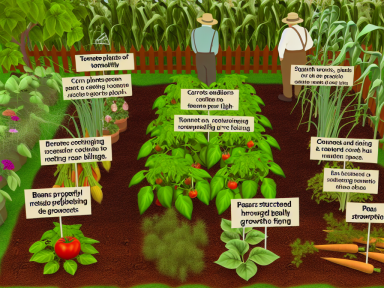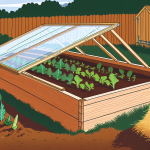What is Companion Planting?
Companion planting is the strategic practice of placing plants together for mutual benefit. This age-old technique can help improve growth, deter pests, and enhance flavors. It’s not just about throwing a bunch of plants together; rather, it’s about understanding which plants support each other and why.
Benefits of Companion Planting
1. **Pest Control:** Certain plants repel pests that could otherwise wreak havoc on your garden. For example, planting marigolds around your tomatoes can repel nematodes.
2. **Enhanced Growth:** Some plants can improve the nutrient uptake of their neighbors. For instance, beans fix nitrogen in the soil, which benefits leafy vegetables like lettuce.
3. **Weed Suppression:** Groundcovers such as sweet alyssum can act as living mulch, thus reducing the space where weeds can establish.
4. **Pollination:** Flowers that attract pollinators can increase the fertility of fruits and vegetables by ensuring better pollination.
Plant Pairings That Work
Tomatoes and Basil
The classic combination of tomatoes and basil is more than just a flavor match. Basil helps to deter thrips, flies, and mosquitoes, which are pests that can stunt the growth of tomato plants. Additionally, basil can enhance the flavor of your tomatoes.
Carrots and Onions
This pairing works exceptionally well because onions repel the carrot fly, while carrots repel onion flies. As a result, both plants can grow without falling prey to these specific pests.
Beans and Corn
Beans fix nitrogen in the soil, which corn needs in abundance. Corn provides a natural structure for bean vines to climb. Adding squash to this mix, known as the “Three Sisters” method, can further enhance this relationship as squash acts as a living mulch to keep the soil moist.
Plants to Avoid Pairing
Tomatoes and Potatoes
Both plants are susceptible to blight, a fungal disease. Planting them together can quickly lead to an infestation that wipes out both crops.
Onions and Peas
Onions and other alliums can stunt the growth of peas. It’s best to plant these crops in separate garden beds.
Practical Tips for Successful Companion Planting
– **Start Small:** If you’re new to companion planting, start with just a couple of pairings and observe how they perform.
– **Proper Spacing:** Even compatible plants need their space. Make sure you understand the mature sizes of your plants to avoid overcrowding.
– **Rotate Crops:** Just because two plants work well together one year doesn’t mean they should be planted in the same spot the next year. Crop rotation helps prevent soil depletion and pest build-up.
– **Experiment and Observe:** Gardening is as much an art as it is a science. Feel free to experiment with different combinations and observe the results.
Conclusion
Companion planting is a valuable tool for any gardener looking to improve yields, deter pests, and create a more harmonious garden ecosystem. By understanding the specific needs and benefits of various plant pairings, you can create a garden that thrives with natural synergy. Always remember that gardening is a journey of continuous learning and observation. Happy planting!



GIPHY App Key not set. Please check settings